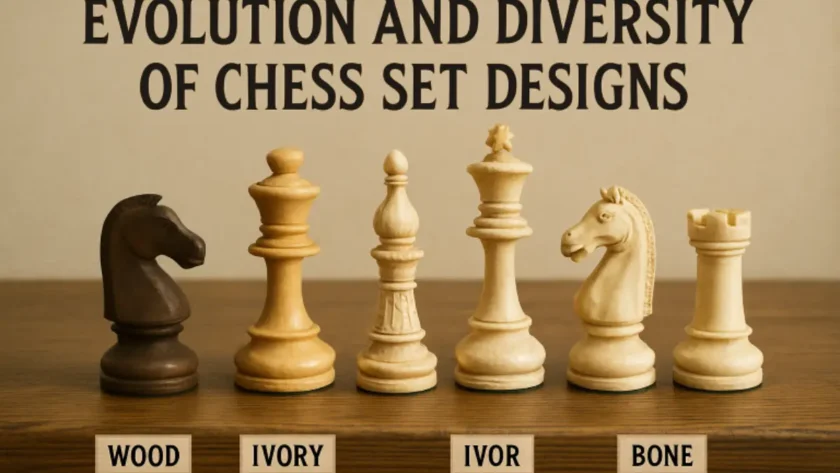Chess is a game of intellect and a living testament to human creativity and cultural exchange. Over more than 1,500 years, chess has transcended continents and epochs, allowing collectors to experience history firsthand. As tangible artifacts, antique chess sets provide unique windows into the materials, values, and lifestyle of centuries past.
Among the most sought-after collectibles for enthusiasts are Jaques chess pieces, renowned for their classic design and historical importance, which exemplify the intersection of craftsmanship and cultural heritage.
The allure of collecting chess sets lies in the beauty of the pieces and their role as cultural documents. Each set tells a story about its place of origin, the status symbols of the day, and even the shifts in political or economic power. From simple wooden sets exchanged among common folk to ornately carved works reserved for royalty, these artifacts carry the marks of their makers and their time.
As collectors discover more about the history behind pieces such as Jaques chess, the hobby transforms into a scholarly pursuit, blending art appreciation with historical investigation.
Contents
The Evolution of Chess Sets
The earliest chess pieces were fashioned from locally available ivory, bone, and wood. The designs were influenced by local artistry and the social hierarchies of their time, revealing much about the societies that produced them.
One of the most remarkable examples of medieval chess craftsmanship is the Lewis Chessmen, discovered in Scotland in the 19th century. Likely carved in Norway during the 12th century, these pieces reflect the intricacies of Norse mythology, medieval attire, and the everyday life of the period through their detailed and expressive forms.
Over the centuries, chess set design continued to evolve alongside society. The 17th and 18th centuries, marked by seismic political and economic shifts due to the Industrial Revolution, saw chess set designs become more uniform and accessible. The Staunton pattern, introduced in the mid-19th century, became the standard for casual and tournament play and remains the most recognized design.
The widespread adoption of standardized sets like the Staunton pattern democratized the game and contributed to its global popularity. For more on the evolution of chess set designs and societal impact, visit Smithsonian Magazine.
Notable Chess Collections
The John G. White Collection at the Cleveland Public Library is among the world’s most extensive and essential chess artifact compilations. Amassed in the late 19th and early 20th centuries, this collection spans thousands of books, chess sets, and memorabilia.
It traces the game’s evolution and illustrates its role in different cultures and eras, highlighting the interconnectedness of literature, art, and play. The John G. White Collection is a vital resource for researchers and enthusiasts, preserving fragile links to chess history.
Chess Collecting and the Influence of Society
Chess sets frequently mirror the cultural and political climates in which they are created. Symbolism on the chessboard shifts during times of political upheaval. For instance, during periods of revolution and reform, artists and craftsmen depict leaders, social classes, and current events in their pieces. The transformation of the game’s equipment echoes broader movements within art and industry, underscoring chess as both a pastime and a record of society’s evolution.
Modern Exhibitions and Preservation
Modern museums and cultural institutions play a crucial role in preserving chess history. The World Chess Hall of Fame in Saint Louis is a leading venue, staging regular exhibitions of rare and notable chess sets worldwide. These curated displays educate the public about the game’s enduring social relevance and highlight the intersection of old-world artistry with modern design.
In a digital era, the physical preservation of chess sets and historical documentation has become even more essential, safeguarding past treasures for future generations. A detailed look at contemporary exhibitions can be explored at the World Chess Hall of Fame.
The Role of Chess in Literature and Art
Chess has captured the imagination of writers and artists for centuries, appearing as a potent metaphor for power, strategy, and the human condition. T.S. Eliot’s “The Waste Land,” specifically the section titled “A Game of Chess,” exemplifies the poetic resonance of the game. Beyond literature, visual artists have used the chessboard and its pieces to comment on psychological and societal conflicts, resulting in aesthetically striking and intellectually provocative works.
Collecting as a Personal Journey
Many collectors describe chess set collecting as a lifelong passion that blends curiosity, scholarship, and appreciation for artistry. Each acquisition is not merely an addition to a personal archive, but a journey into the cultural and historical fabric of the world.
Through studying the materials, techniques, and stories behind each set, collectors deepen their understanding of both chess as a game and human history in general. These personal journeys often spark connections with fellow enthusiasts across borders, united by a shared love of craftsmanship and cultural heritage.
Conclusion
Chess collecting is more than a pursuit of rare objects. It is an exploration of the interplay between history, art, and society, where each chess set acts as a miniature chronicle of human civilization. By preserving and studying these artifacts, collectors and museums help to ensure that the timeless story of chess continues to inspire and educate future generations.




